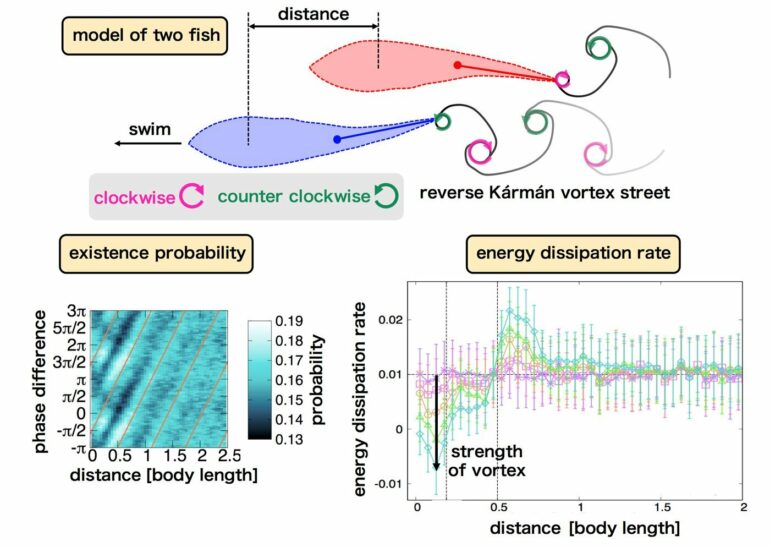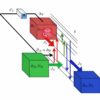Researchers from Tohoku University have developed a model that simulates the motion of fish tail fins. The model uncovers the underlying mechanisms behind a commonly observed phenomenon in fish: how they synchronize the movement of their tail fins, riding the resultant vortices created, thereby saving energy.
Details of the research were published in the journal Physics of Fluids on November 2, 2023, where it was selected as a Featured Article.
“A long-standing hypothesis about swimming fish is that they exploit the vortex flow generated by other fish to save energy,” explains Susumu Ito. “They work in tandem to utilize the reverse-Kármán vortex street and adjust their caudal fins accordingly.”
In fluid dynamics, a Kármán vortex is swirling currents that form behind an object moving through a fluid. In the reverse version, the vortices have an opposite rotational direction.
To elucidate more about these mechanics, the researchers developed a unique theoretical model that considers not only the regular muscle-driven movements and the impact of water forces but also the natural variations, like physiological factors, that can affect how fish move. This enabled the model to mimic in more detail the way fish naturally coordinate their actions.
After running numerical simulations, Ito and his team were able to replicate the synchronization of caudal fins and demonstrate that it results in a significant reduction in energy dissipation for a pair of fish at distances shorter than half a body-length. However, the results also suggest that the typical timing of fin movements between two fish does not lead to the most optimal means of conserving energy.
Additionally, the model reproduced some fundamental properties of solo swimming, such as the relationship between swimming speed and tailbeat frequency. The model also applies to various fish species that swim with a carangiform or subcarangiform style, such as horse mackerel, trout, salmon, carp, and goldfish.
“We have illuminated the dynamics of synchronization in biological species, which can also be applied to other living creatures such as birds, animals, bacteria, and even unicellular eukaryotes,” adds Ito. “The benefits extend to robotics too; the discovery could help find new energy-saving strategies for groups of drones moving in coordination.”
More information:
Susumu Ito et al, Vortex phase matching of a self-propelled model of fish with autonomous fin motion, Physics of Fluids (2023). DOI: 10.1063/5.0173672
Citation:
Model shows how fish synchronize tail fins to save energy (2023, November 6)



